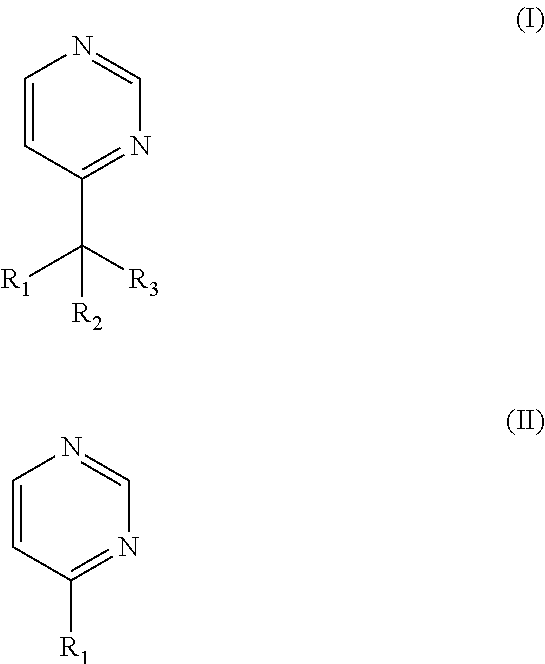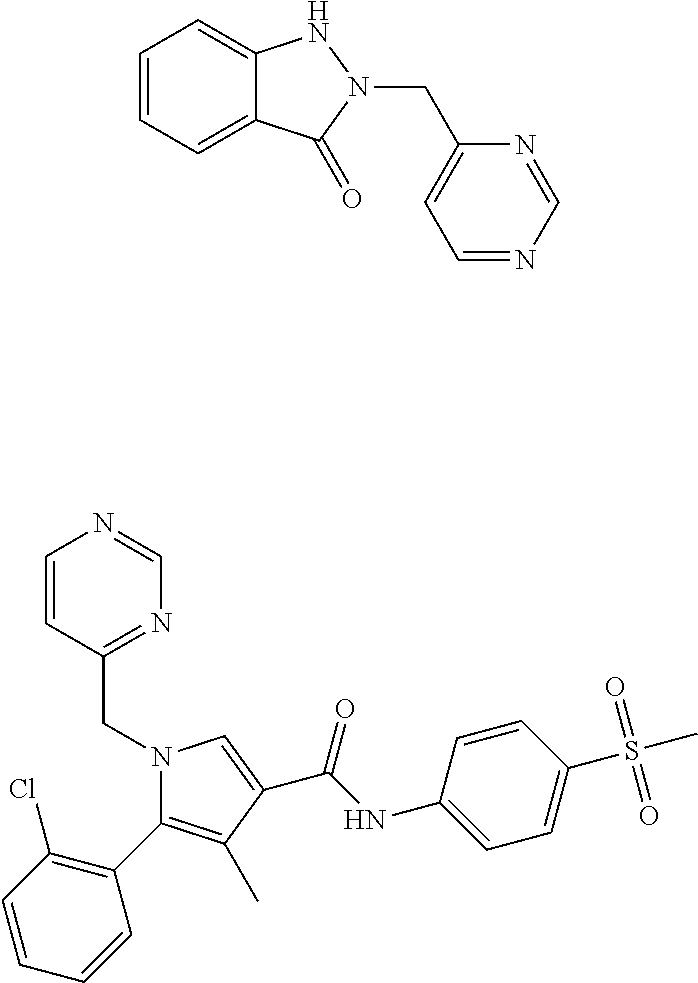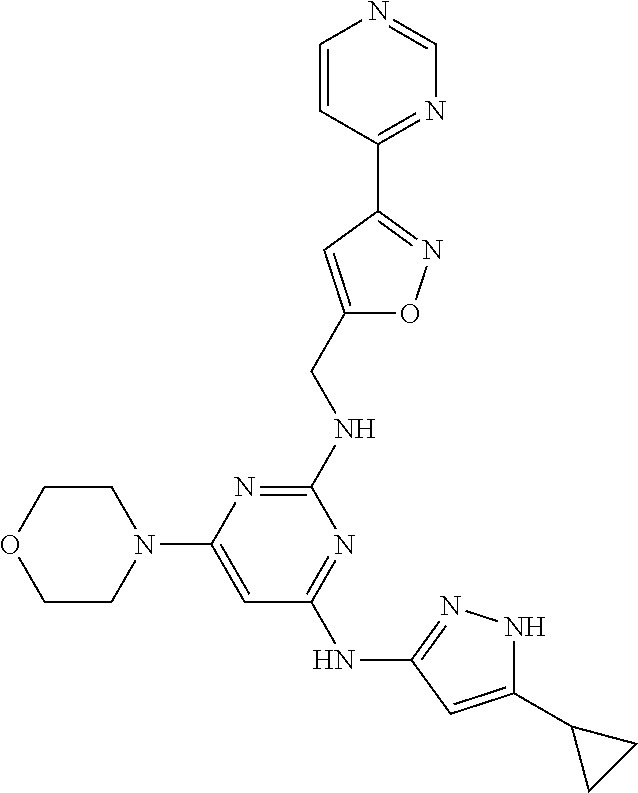Metalloenzyme inhibitor compounds
a technology of enzymes and compounds, applied in the field of metaloenzyme inhibitor compounds, can solve the problems of dramatic decrease in enzyme activity, and achieve the effect of facilitating the processing of active compounds and preventing inactivation
- Summary
- Abstract
- Description
- Claims
- Application Information
AI Technical Summary
Benefits of technology
Problems solved by technology
Method used
Image
Examples
example 1
1-(6,7-dimethoxynaphthalen-2-yl)-2-methyl-1-(pyrimidin-4-yl)propan-1-ol (1)
[0200]To a stirred solution freshly prepared LDA (0.073 g, 0.69 mmol) in dry THF (5 mL) was added 5-bromopyrimidine (0.1 g, 0.62 mmol) in THF (3 mL) followed by drop wise addition of ketone A (0.16 g, 0.62 mmol) in THF (3 mL) at −10° C. under inert atmosphere. After being stirred for additional 2 h at −10° C., the reaction mixture was allowed to warm to RT and stirred for 16 h. The reaction mixture was quenched with saturated NH4Cl and extracted with ethyl acetate (3×50 mL). The combined organic extracts were washed with brine, dried over anhydrous Na2SO4 and concentrated under reduced pressure. The crude material was purified by column chromatography to afford alcohol B (0.09 g, 0.21 mmol, 34%) as syrup. 1H NMR (200 MHz, CDCl3): δ 9.13 (s, 1H), 8.67 (s, 1H), 7.88 (s, 1H), 7.59 (d, J=8.5 Hz, 1H), 7.42 (d, J=8.5 Hz, 1H), 7.11 (s, 1H), 7.06 (s, 1H), 3.99 (s, 3H), 3.98 (s, 3H), 3.73-3.62 (m, 1H), 1.16 (d, J=6.6 ...
example 2
2-Methyl-1-(6-(methylthio)quinolin-2-yl)-1-(pyrimidin-4-yl)propan-1-ol (2)
[0203]To a stirred solution of 6-bromoquinoline (C) (15 g, 72.11 mmol) in EtOAc (200 mL) at 0° C. was added mCPBA (24.8 g, 143.7 mmol) (60% dispersion in water) and stirred at RT for 8 h. After consumption of the starting material (by TLC), the precipitated solid was filtered, washed with EtOAc and dried under reduced pressure to afford the N-oxide D (14 g) as crude material. This material was directly taken up for next reaction without further characterization. MS (ESI): m / z 226 [M++2].
[0204]To a stirred solution of D (14 g, crude) in ACN (100 mL) was added Et3N (30.9 mL, 218.7 mmol) followed TMSCN (27 mL, 218.7 mmol) at 0° C. under an inert atmosphere. The reaction mixture was stirred at RT for 16 h. After the consumption of starting material (by TLC), the volatiles were removed under reduced pressure and purified by column chromatography using 20% EtOAc / hexane to afford E (8 g, 34.3 mmol, 54.7%) as brownish...
example 3
1-(6-(Difluoromethoxy)quinolin-2-yl)-2-methyl-1-(pyrimidin-4-yl)propan-1-ol (3)
[0210]To a stirred solution of quinolin-6-ol (I) (3.0 g, 20.68 mmol) in EtOAc (150 mL) was added mCPBA (8.92 g, 51.7 mmol) (60% dispersion in water) at 0° C. and stirred at RT for 8 h. After consumption of the starting material (by TLC), the precipitated solid was filtered, washed with EtOAc and dried under reduced pressure to afford the N-oxide J (2.8 g, 17.39 mmol, 84%) as white solid. 1H NMR (200 MHz, CDCl3): δ 10.42 (s, 1H), 8.41-8.36 (m, 2H), 7.76 (d, J=8.0 Hz, 1H), 7.39-7.20 (m, 3H).
[0211]To a stirred solution of J (2.8 g, 17.39 mmol) in ACN (84 mL) was added Et3N (8.66 ml, 60.8 mmol) followed TMSCN (7.62 mL, 60.8 mmol) at 0° C. under an inert atmosphere. The reaction mixture was stirred at RT for 6 h. After the consumption of starting material (by TLC), the volatiles were removed under reduced pressure. The crude material was purified by silica gel column chromatography eluting with 30% EtOAc / hexan...
PUM
| Property | Measurement | Unit |
|---|---|---|
| enantiomeric excess | aaaaa | aaaaa |
| enantiomeric excess | aaaaa | aaaaa |
| enantiomeric excess | aaaaa | aaaaa |
Abstract
Description
Claims
Application Information
 Login to View More
Login to View More - R&D
- Intellectual Property
- Life Sciences
- Materials
- Tech Scout
- Unparalleled Data Quality
- Higher Quality Content
- 60% Fewer Hallucinations
Browse by: Latest US Patents, China's latest patents, Technical Efficacy Thesaurus, Application Domain, Technology Topic, Popular Technical Reports.
© 2025 PatSnap. All rights reserved.Legal|Privacy policy|Modern Slavery Act Transparency Statement|Sitemap|About US| Contact US: help@patsnap.com



